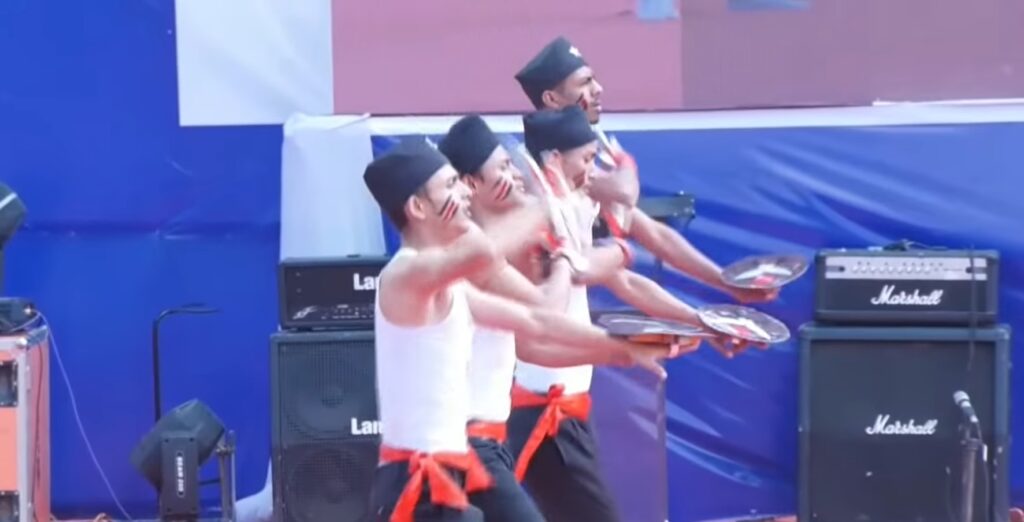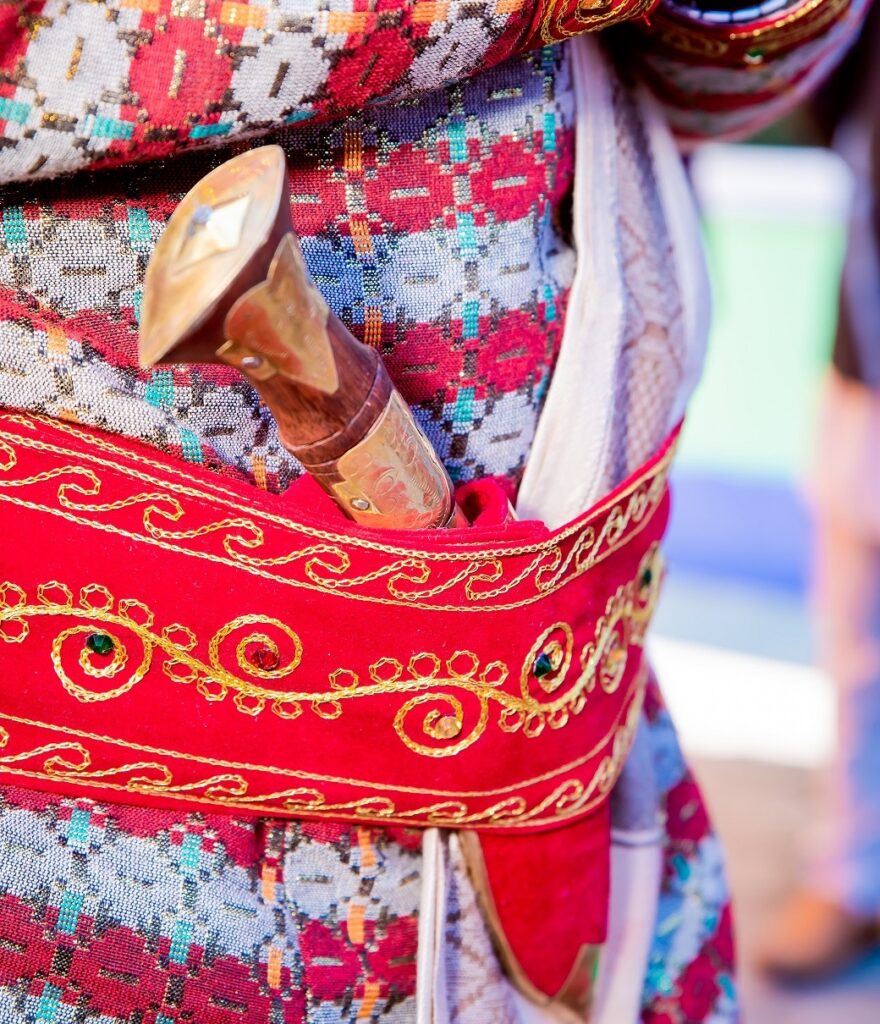Is fighting the only way to display courage? No! You can display courage and valor through dance as well. The biggest example is the Khukuri dance of Sikkim. While Sikkim is a thick book filled with numerous pages of different folk dances, Khukuri Naach is the most famous one that depicts strength.

Sikkim is the land of beautiful scenery. The mountain peaks, the forest trees, and the local festivities are the main attraction of Sikkim. Sikkim is like a treasure island. It has hidden treasures that will surprise you, please you and impress you.
Over time, a lot of Gurkhas have settled in Sikkim. These people of Nepali descent settled in the Sikkim celebrate courage and strength through Khukuri dance. While most of the folk dances originating from Sikkim are used to worship the divine, this folk dance explores other aspects of Sikkimese life.
What Is A Khukuri?

Khukuri is a small knife that symbolizes victory. It generally has carved wooden handles with sharp blades. Khukuri is a very important part of Gurkha culture. Gurkhas display their triumph using a khukuri. It is a sign of robustness and power. Khukuri was designed for the warriors who won the battles and saved the pride of Gorkhas.
In this folk dance, Khukuri is used as a prop. This knife is the soul of Khukuri Naach. The dancers perform various tricks using the Khukuri while dancing on the beats. Khukuri dance will leave you amazed. After watching fifteen Khukuris spin in the air at the same time, who will not be surprised?
Explore all folk dances of India
Khukuri Dance Performance
Khukuri dance not only symbolizes courage, but it also demands courage. Only the bravest are entrusted with a khukuri. It is not easy to balance Khukuri while following the beats and elegantly moving your feet.
You will witness the fearless dancers playing with their wrists and fingers to perform astonishing stunts with Khukuri in this folk dance. Khukuri Dance is a celebration of victory, and the cheer is evident in the performance. The happy faces performing brave tricks with the knife will tell you the story of courage that runs in the veins of Nepalis.
Since Khukuri dance includes the use of a dangerous knife, the movements are restricted. The dancers stand in their fixed position throughout the performance and use their legs to match the beat. This folk dance is all about power, and thus the energy emitted by the performance is inevitable. Even if you are not part of their victory, you will feel proud after watching the powerful Khukuri Naach.
Who Performs It?
Khukuri Naach is performed by Gurkhas. Since arms are associated with men, only they performed Khukuri Dance. A group of men gathers to dance with a Khukuri on the subtle beats of various instruments.
Purpose of Khukuri Naach?
Besides celebrating victory, Khukuri dance is performed as a tribute to the brave soldiers who put their life at stake for our sound sleep. It is a tribute to their courage to stand on the border and protect us from danger. This dance is an acknowledgment of their robustness to happily accept a bullet for the security of our nation. That is the reason why you can witness this energetic folk dance on various military events.
Earlier during the monarchy, the Khukuri was the pride of the warriors who spent years on the battlefield to save their kingdom. Now it is for the soldiers who selflessly serve the country and make us proud every day.
Khukuri symbolizes their strength and courage, and Khukuri dance is a tribute to their service. Every folk dance of India celebrates an eminent element. Khukuri Naach celebrates the courageous and victorious soldiers while the Garba celebrates the coexistence of different colors. This Gorkha Naach is an extraordinary gesture to thank the warriors and also a pride march for the Nepalis. Khukuri includes color, courage, and cheer.

Pingback: Folk Dances of India - Auchitya
Pingback: All Folk Dances of India - Auchitya